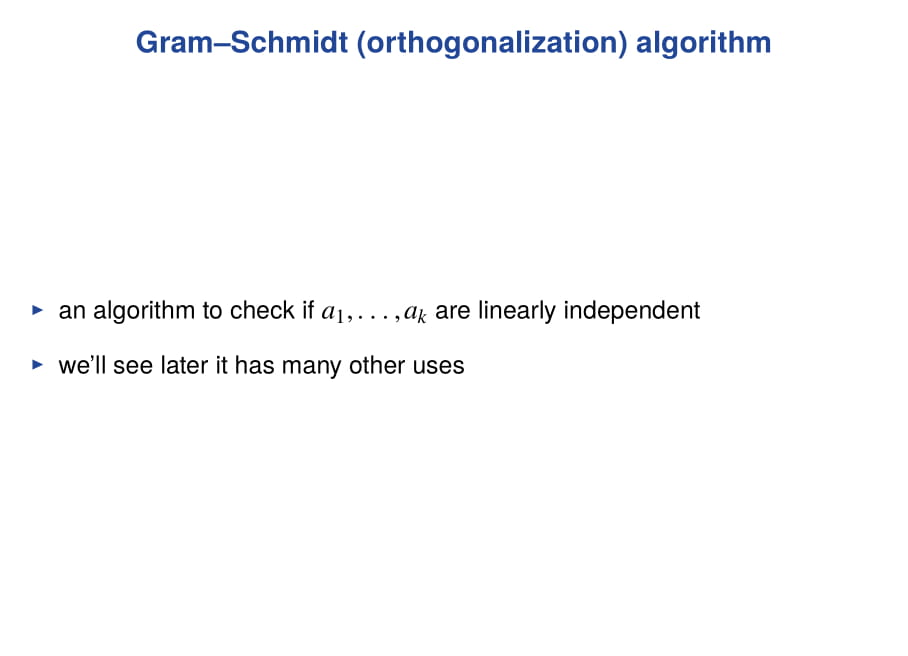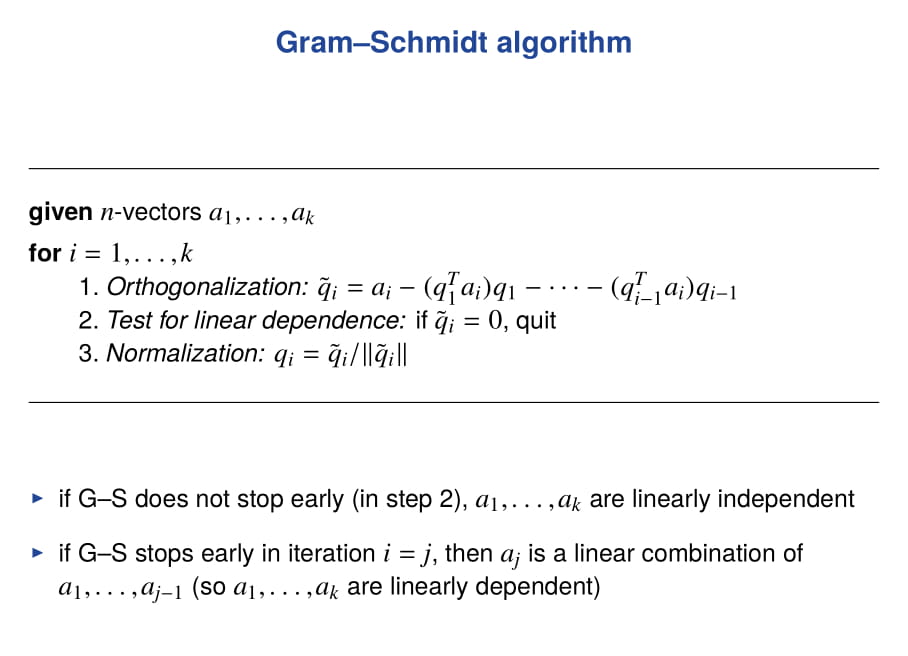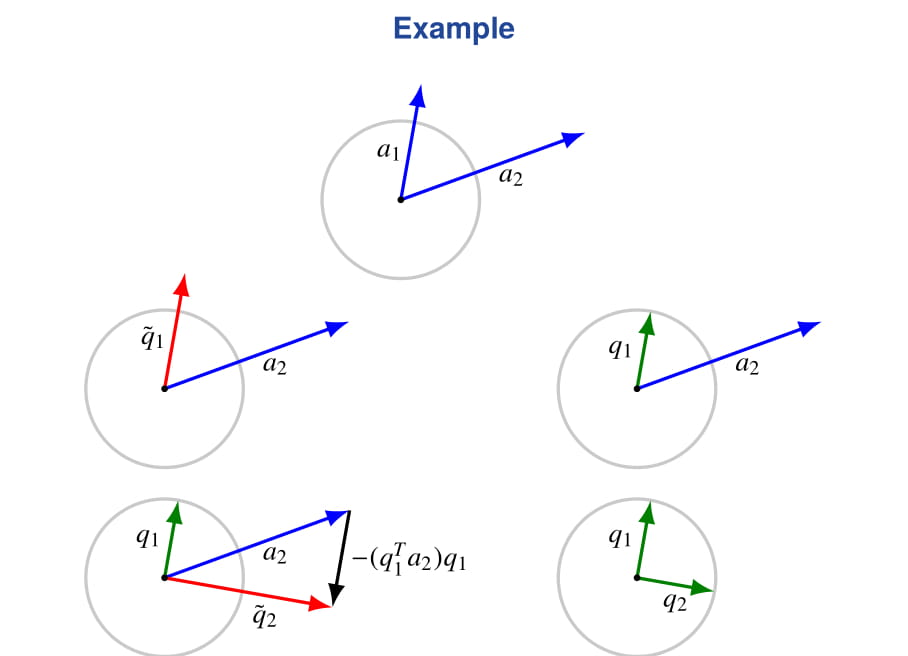Hacking Math I
Spring 2020

Topic 7: Linear Independence
This topic:¶
- Vector spaces
- Linear Independence
- Orthogonality
- Gram-Schmidt
Reading:
- I2ALA Chapter 5 (Linear Independence)
I. Vector Spaces¶
Vector space I¶
A vector space is a set of vectors with three additional properties (that not all sets of vectors have).
- Contains origin
- Closed under addition (of members of set)
- Closed under scalar multiplication (of a member in the set)
Vector space II¶
Start with a set of vectors
$$ S = \{\mathbf v_1, \mathbf v_2, ..., \mathbf v_n\} $$Think of these as your building blocks
A vector space is a new set consisting of all possible linear combinations of vectors in $S$.
This is called the span of a set of vectors:
\begin{align} V &= Span(S) \\ &= \{\alpha_1 \mathbf v_1 + \alpha_2 \mathbf v_2 + ... + \alpha_n \mathbf v_n \text{ for all } \alpha_1,\alpha_2,...,\alpha_n \in \mathbf R\} \end{align}"Basis"¶
If the vectors in $S$ are linearly independent, they form a basis for $V$.
The dimension of a vector space is the cardinality of (all) its bases.
Basically, this is the smallest possible set of building blocks for the vector space
Example¶
Start with a set containing a single vector
$$ S = \{\mathbf v_1\} $$What are the possible linear combinations of vectors in $Span(S)$?
Example¶
Start with a set containing two vectors
$$ S = \{\mathbf v_1, \mathbf v_2\} $$What are the possible linear combinations of vectors in $Span(S)$?
II. Linear Independence¶
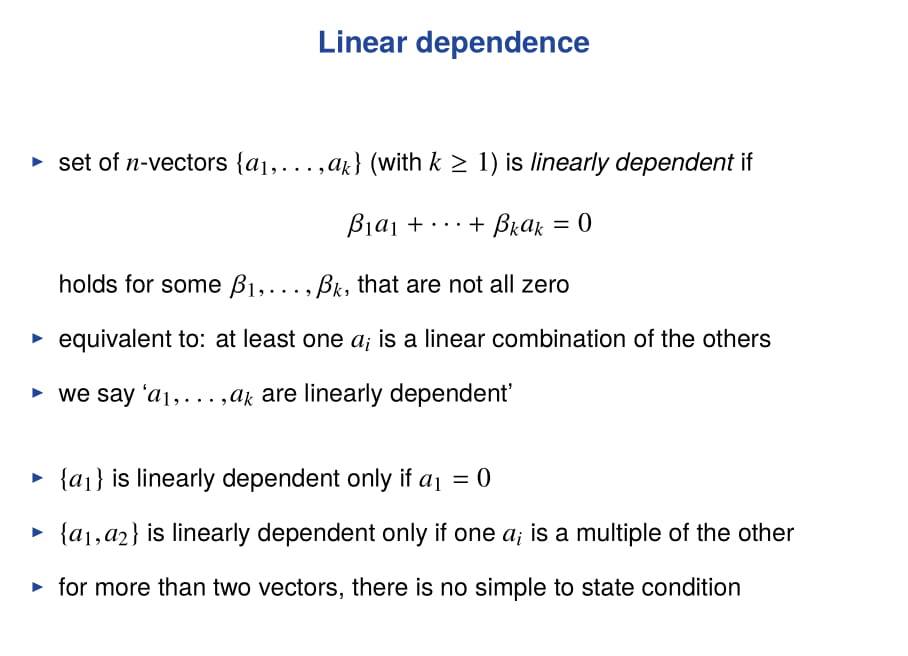
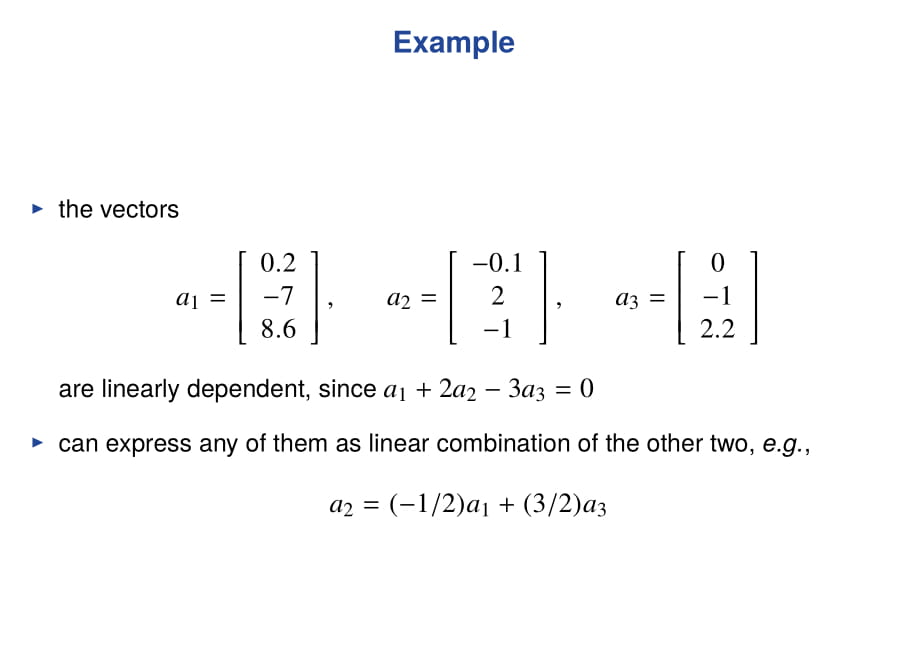
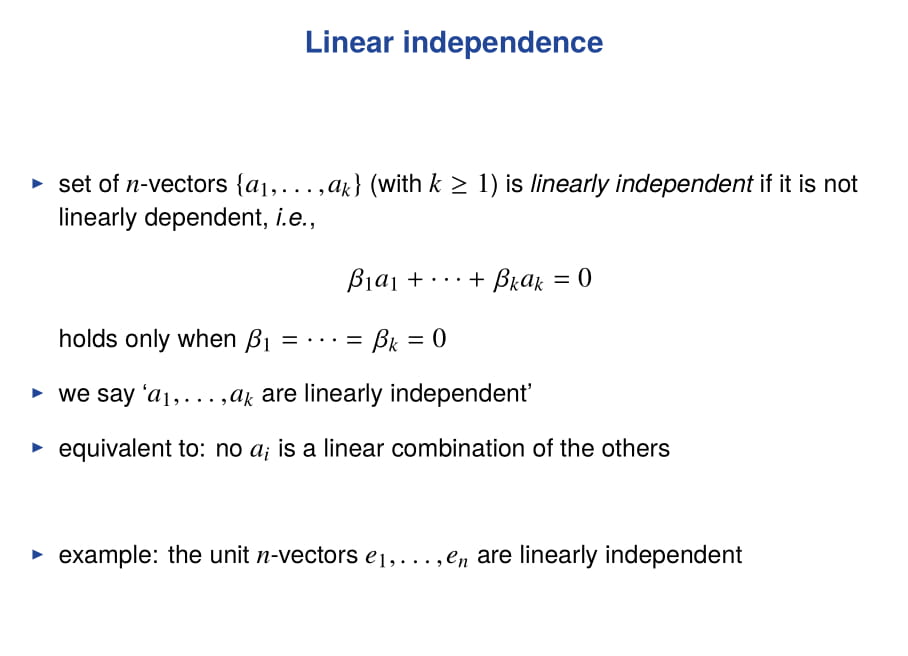
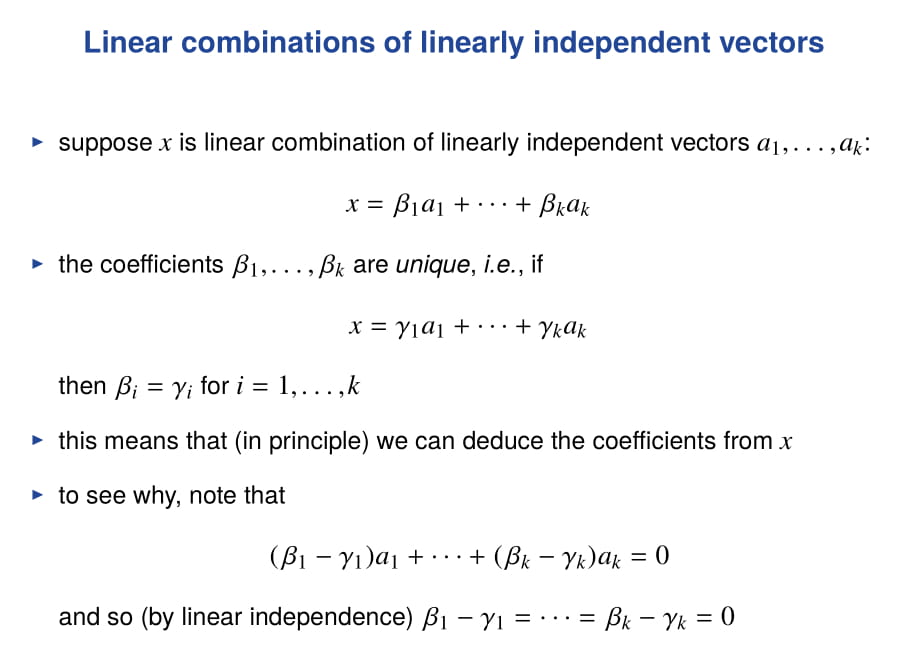
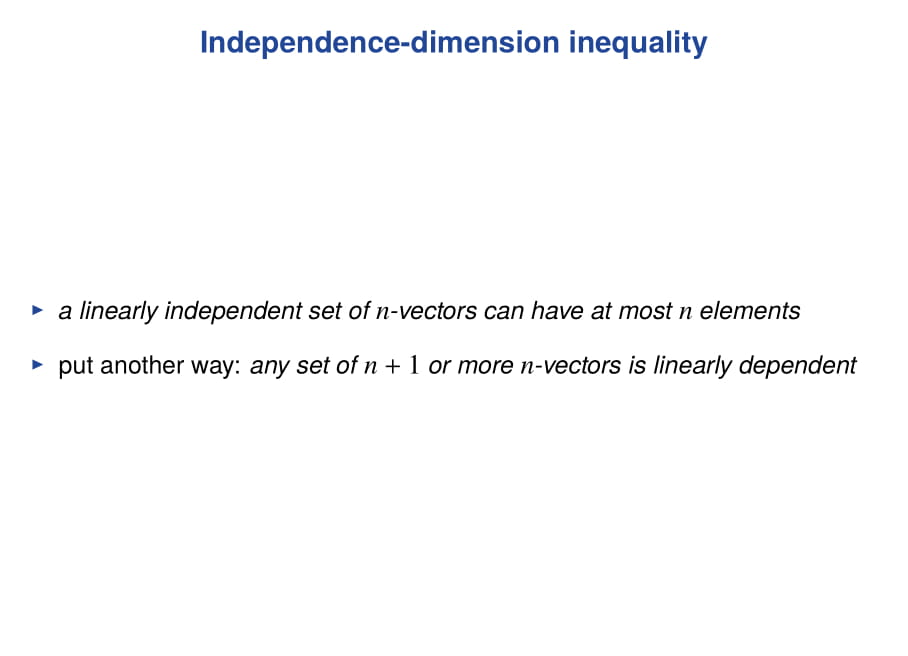
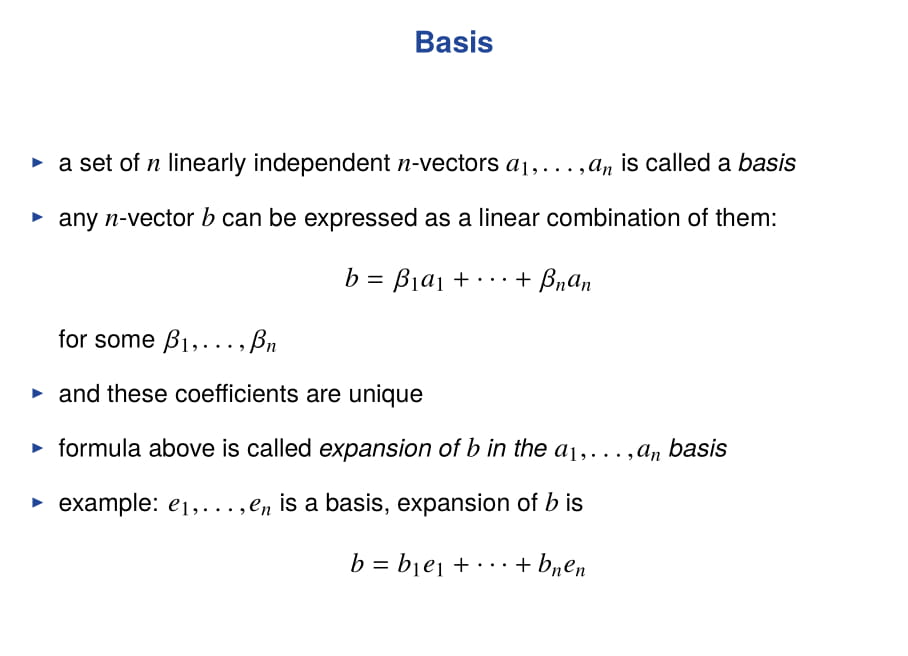
III. Orthogonality¶
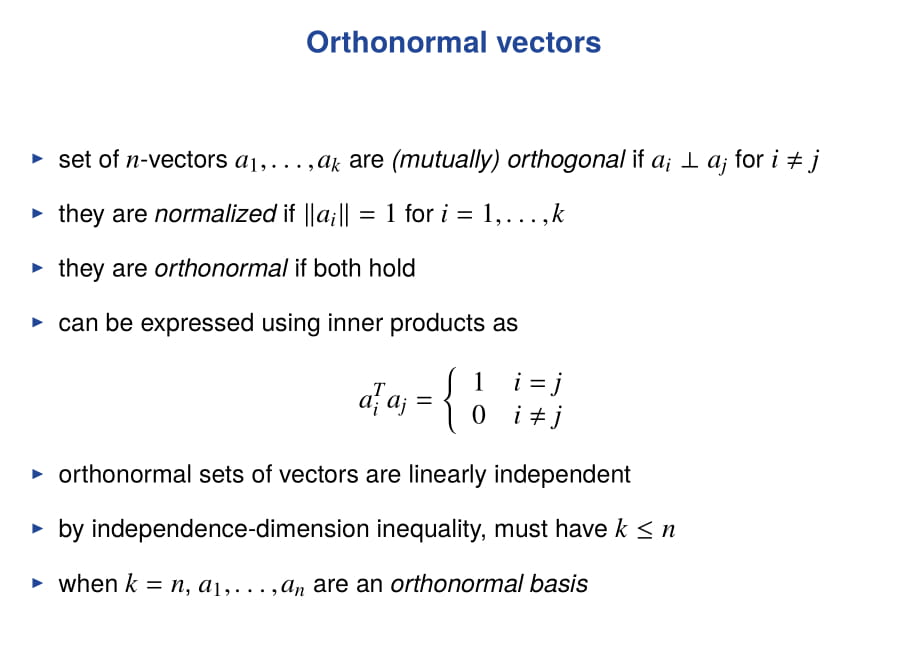
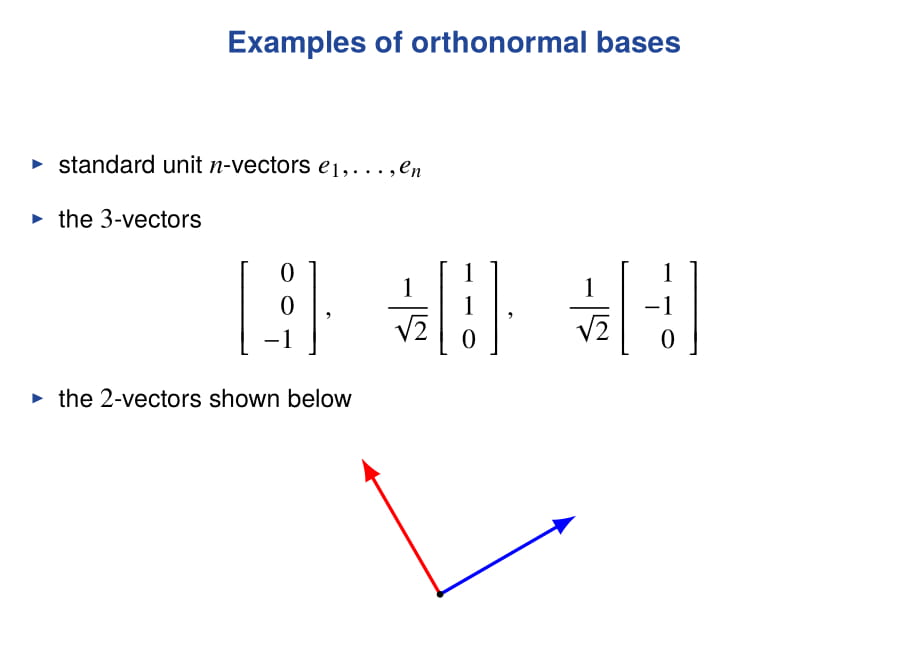
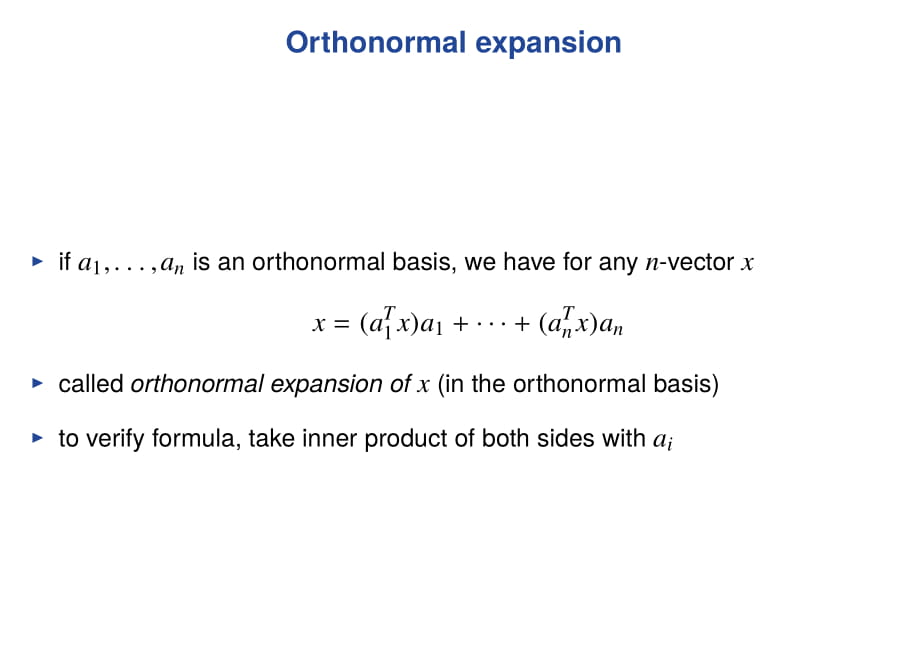
IV. Gram-Schmidt¶
